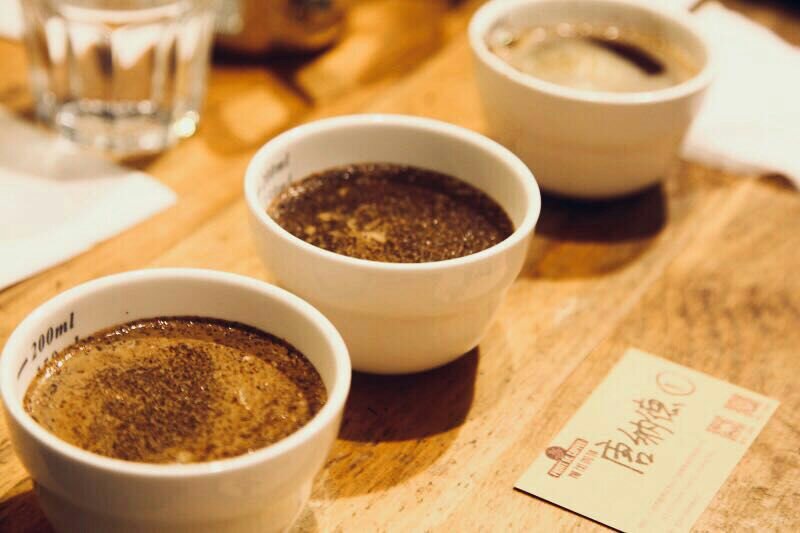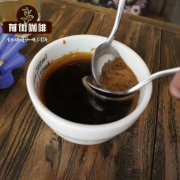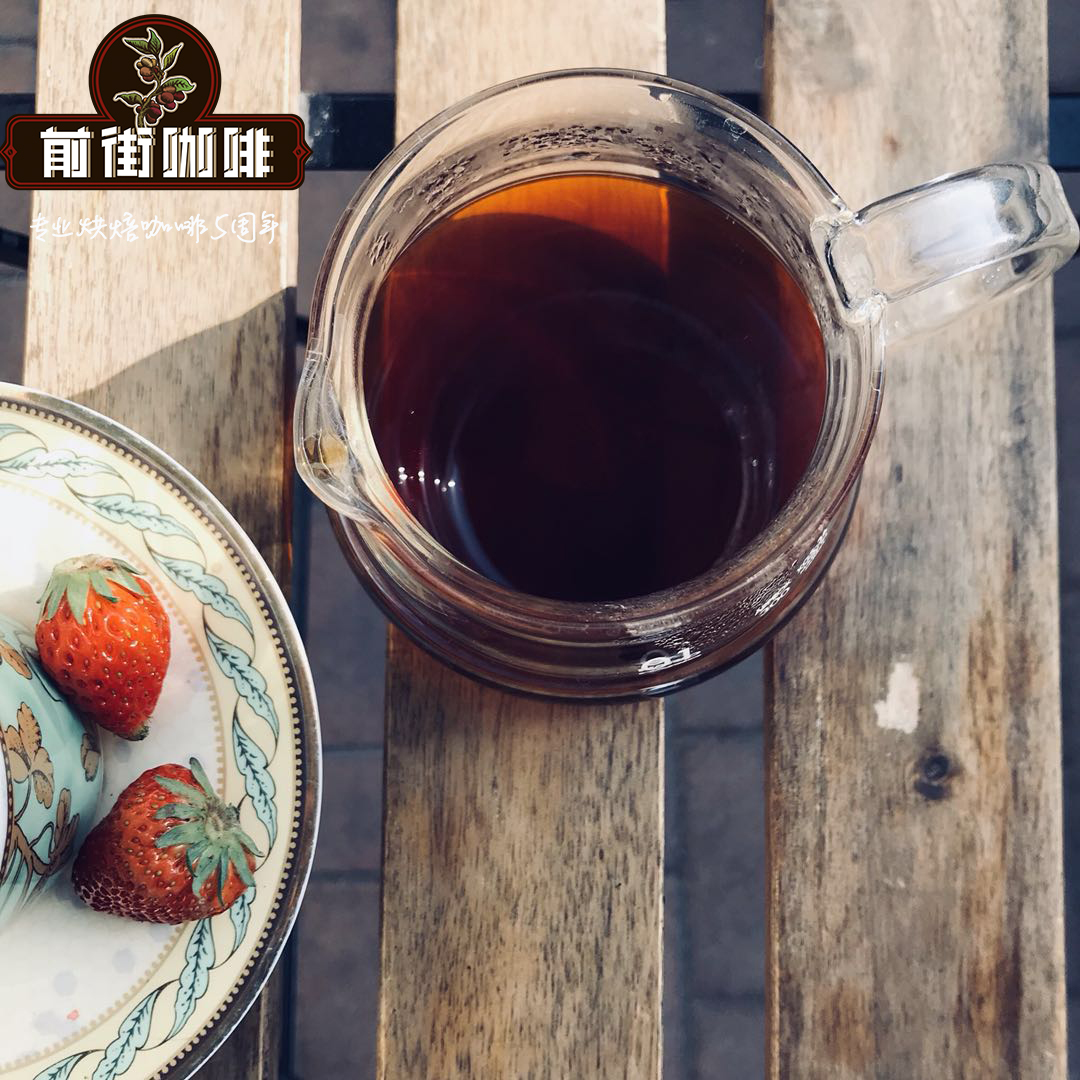SCAA coffee cup test standard system process and scoring items

Professional coffee knowledge exchange more coffee bean information please follow the coffee workshop (Wechat official account cafe_style)
Why should you uniformly manage your cup test standards?
Cup testing is a very common practice in the coffee industry, and although cup testing has clear specifications, few companies devote energy to studying what cup testing practices will best suit their needs, let alone verifying that their practices are consistent with the standards they claim to use.
When determining the cup test standard, the process of creating the standard is called centerline control, which means reducing variables and improving efficiency in some cases. It makes your sample reviews more consistent and makes it easier to distinguish between similar coffees.
For example, deep roasting can mask the flaws you want to detect, and the quality of extremely shallow roasted coffee is difficult to distinguish. How is the coffee baked? What is the ratio of coffee powder to water? How long does it take for baking, grinding, and cup testing? Where does the coffee come from? What kind of water is used in the cup test? How hot is the water? How long will it take between filling the coffee with water and breaking the residue?
People who set an industry standard need to ensure that these standards are practical to ensure that they are widely adopted, but individual companies often set more stringent process indicators for the technology of their devices and personnel.
Standard system flow
Since it is a scientific method, there is a standard system process to carry out. At present, the two major cup test records in the coffee industry are SCAA (Specialty Coffee Association of America) and COE.
COE can refer to
This time, let's share the preparation homework of SCAA Cup of Standards Test.
1. Preparation tools are required for cup testing:
Samples of raw beans and their cooked beans
Agtron spectrum analyzer
Bean grinder
Glass / or porcelain bowl (cup test container, the instrument used in the same cup test should be of the same material, and the common ones are 5oz or 6oz Manhattan Glass or Rock Glass. For white porcelain cups, the recommended capacity is between 175and 225ml)
Cup meter, empty bowl (spitting coffee liquid), cup spoon, electric kettle, timer
two。 Basic requirements for cup testing environment:
Cup test table (necessary)
Clean, quiet, no other aroma interference
3. Roasting/ baking (preparation of cup test sample)
The cooked beans should be finished within 8-24 hours before the cup test, and the cooked beans should be kept for at least 8 hours.
Baking degree: according to the standard value of M-Basic (Gourmet) Agtron, the baking degree is from light baking to light baking, the bean value is 58, the powder value 63 is 55-60.
Baking time: more than 8 minutes-less than 12 minutes, no scorching and peeling
Cooked beans should be cooled by air immediately, not by water cooling.
When the sample bean temperature drops to room temperature (about 20 degrees), put it in a sealed container or airtight bag until you start the cup test to reduce contact with air and prevent contamination.
Sample beans should be kept in the shade temporarily, but do not need to be frozen or refrigerated.
4. Determining/ coffee quantity:
8.25g coffee: 150ml water. It conforms to the best brewing ratio of Golden Cup. However, the proportion of coffee powder can be adjusted according to the glass capacity used in the cup test, and the difference is about plus or minus 0.25 grams.
5. Water injection:
Grind the sample beans before the cup test, and complete the water injection within 15 minutes after grinding. Do not soak coffee powder for more than 30 minutes after injecting water.
According to the coffee proportion mentioned above, the proportion of water is adjusted according to the weight of coffee beans (not ground coffee powder).
Coffee beans are ground more finely than filter paper (for example, they are usually ground into ordinary granulated sugar particles, and that cup test is about fine granulated sugar particles), which means that 20Mesh-sized meshes in the United States can be used as a standard of about 70%. In order to make the test more accurate, prepare 5 cups of each sample bean tested in the cup
On water quality:
It is recommended that the water used should not have fragrance or distilled water or soft water. The ideal total solubility (TDS) of water quality is in 125--175ppm, but not less than 100ppm, nor more than 250ppm (too low TDs means excessive extraction rate, and too high TDS means insufficient extraction). The brewing temperature is 93-94 degrees. Wait 3 to 5 minutes after water injection before starting the cup test.
The main purpose of doing so many standardized processes above is to control the variables that affect the flavor, so that the flavor and taste of coffee beans can be judged more accurately by means of quantification (scoring). Cup testers can clearly point out the differences in flavor among different samples as a reference for identifying the quality of coffee beans.
When designing the experiment, make sure that the content of your test can be repeated. For example, there are many smooth sample roasters that people use every day, which are not effective cup testing instruments. Can a small number of sample beans be fully tested? Maybe, otherwise we can skip the baking part of the standard experiment.
However, several roasters with decent instruments and control functions are sufficient to standardize the baking degree required for cup testing. If you have such an efficient machine, there is no reason not to use it. If you don't have this ability, there's no point in setting a baking standard that assumes you can do it.
Details of cupping-degree of Grinding
For example, the SCAA cup standard defines particles with a grinding degree of 70% to 75% and a sieve of 20 mesh. No one has a grinder with such a degree, and there is no sieve for cup testing in many places. By examining your cup test process under different grinding degrees, you can determine which grinding degree of this grinder is the most suitable, and record this position in the cup test.
If the standard of grinding degree is not the use of eye screen, but "grinding degree # 5", then people will tend to buy the same grinding machine. As the grinder needs to be calibrated frequently, retaining some standard samples can also help to compare with future ground coffee. If you have tools to measure particle size and distribution, retaining standard samples can still help compare the coarse and fine powder distribution of the grinder during regular inspection.
Note:
For each cup of coffee sample, the cup spoon should be cleaned and rinsed with ice water to avoid affecting each other's taste.
In the same way, taste each cup of coffee sample several times until the temperature of the coffee sample drops to room temperature. Be careful to forget the previous feeling as much as possible before each coffee taste, so as to experience the next coffee sample with the purest feeling.
In the process of tasting coffee, you can spit out most of the coffee liquid. But swallow at least a small part in order to experience the feeling of the coffee sample.
Now I will tell you about each small item in SCAA's cup test table.
First: aroma Fragrance/Aroma
The aroma consists of two parts, dry incense and wet incense. The first image of the bean grinding and the first project that needs to be scored is the dried fragrance, the aroma of coffee flowers, roasted hazelnuts and roasted almonds are all pleasant aromas. Water injection, the broken shell of the wet fragrance gives people more fantasy, honey, lemon, apricot fruit make people salivating.
The second scoring project: sipping flavor, Flavor
Sipping flavor, flavor is the first project to be perceived and scored when the coffee liquid drops to 71 ℃ and starts sipping, including various flavors and the sense of smell behind the nose; cup testers can include the tastes they feel in the scoring items, including the various flavors measured or drunk. It can be said that sipping flavor is a very important scoring project, and it is also a basis for testing the characteristics of a cup of coffee sample. The more the better, the higher the score.
The third rating project: Yu Yun, Aftertaste
The aftertaste or aroma or touch that still stays in the mouth after sipping, and the good flavor stays for a long time, such as sweetness, remains clearly in the mouth or even spreads after sipping and spitting coffee, then the score of this project will be high, on the contrary, there is no remaining rhyme, or very short, the score is low.
The fourth scoring project: acid quality, Acidity
Sour, good acidity is not like vinegar, which is bright and lively and can also detect many kinds of acidity such as citrus, berries or sweet lemons, as well as the sweet and sour melons like cantaloupe or the crisp acidity of freshly ripe apples. The above acids are of high quality; bad acids are like unripe fruit or acetic acid, and some bad acids are like overripe fruit or rotten fruit, and fermented acid or rotten acid can be detected. The higher the quality, the higher the acid score.
Fifth rating project: alcohol thickness, Body
Alcohol thickness, scoring project is not to measure the taste, this belongs to the oral feel of substances and touch, grease, viscosity, quality, etc. all constitute the body;, such as milk and water, the former has a much higher sense of touch, thick soup and clear soup, the consistency and touch of the former are much higher than the latter.
Sixth: consistency, Uniformity
Consistency, this score is relatively simple, 5 cup samples have a different taste, which cup has defects? If all are consistent, then write a big 10 points!
The seventh scoring project: balance, Balance
Balance, which refers to whether the scoring items of coffee are balanced, for example, the acid is bright but will still turn sweet? The touch is sticky but not astringent? Are the various flavors of coffee harmonious? If it is. Then the score of this item will be high.
The eighth scoring project: cleanliness, Clean cup
Cleanliness, fine goods are very important and necessary conditions, the so-called cleanliness is the defective taste without defects and stains (complete freedom from taints or faults), coffee has rotten, earthy taste, medicine iodine taste, fermented acid, rubber, onions, astringency and other bad taste and touch, all indicate that it is not clean enough.
Ninth rating project: sweetness, Sweetness
Sweetness not only represents that the coffee fruit is harvested at the best ripening period, and that it is not mixed with unripe beans, but also represents the excellent quality of coffee. Only by selecting freshly ripe coffee fruits to treat them into raw beans can we get better sweetness, and there are many kinds of sweetness, such as sugarcane sweetness, caramel sweetness and so on. Coffee usually has sweetness, so this item will give a high score as long as it feels sweetness.
Tenth rating Project: overall Evaluation, Overall
Overall, the coffee is excellent, attractive to you, or average, or do you not like her at all?
This scoring project is the overall assessment of the tester, and it can also reflect his personal preferences.
If there is no cup tester to test each type of coffee, there will be no harvest from coffee farmers, and there will be no refreshing drinks in the cup. the true meaning of cup testing is to find better coffee.
Important Notice :
前街咖啡 FrontStreet Coffee has moved to new addredd:
FrontStreet Coffee Address: 315,Donghua East Road,GuangZhou
Tel:020 38364473
- Prev

What is the difference between the SCAA standard cup test preparation process and the standard SCAA and COE cup test?
For more information on coffee beans, please follow the coffee workshop (official Wechat account cafe_style) to review the cup test spirit mentioned earlier: before the raw coffee beans are sent to all parts of the world, the cup test will be carried out by the coffee farmers' association or refinery of the producing area, that is, to test the aroma and taste of the beans, to judge the flavor and taste of the coffee, and to identify the coffee.
- Next

There are many kinds of coffee, how can beginners quickly identify the individual coffee that suits them best?
Professional coffee knowledge exchange more coffee bean information please follow the coffee workshop (Wechat official account cafe_style) Coffee types as a coffee novice, when entering the coffee shop, I think you can also confirm your eyes with the barista, confirm your eyes, and describe to the clerk what kind of coffee you like. There is no need to be as professional as a professional coffee review.
Related
- Detailed explanation of Jadeite planting Land in Panamanian Jadeite Manor introduction to the grading system of Jadeite competitive bidding, Red bid, Green bid and Rose Summer
- Story of Coffee planting in Brenka region of Costa Rica Stonehenge Manor anaerobic heavy honey treatment of flavor mouth
- What's on the barrel of Blue Mountain Coffee beans?
- Can American coffee also pull flowers? How to use hot American style to pull out a good-looking pattern?
- Can you make a cold extract with coffee beans? What is the right proportion for cold-extracted coffee formula?
- Indonesian PWN Gold Mandrine Coffee Origin Features Flavor How to Chong? Mandolin coffee is American.
- A brief introduction to the flavor characteristics of Brazilian yellow bourbon coffee beans
- What is the effect of different water quality on the flavor of cold-extracted coffee? What kind of water is best for brewing coffee?
- Why do you think of Rose Summer whenever you mention Panamanian coffee?
- Introduction to the characteristics of authentic blue mountain coffee bean producing areas? What is the CIB Coffee Authority in Jamaica?

